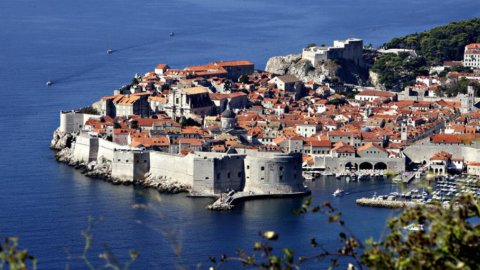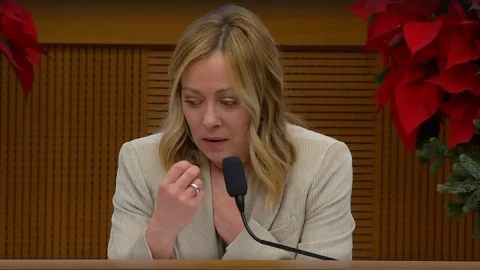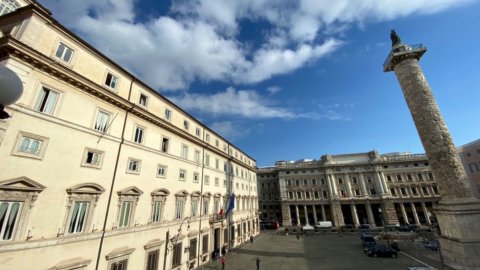During 2014 the Croatian GDP it contracted (-0,4%) for the sixth consecutive year, resulting in a loss of around 13% of GDP with the industrial sector contracting by around 26% and the services sector by more than 7,0%. Only towards the end of December did Croatia show signs of a timid recovery with the GDP trend dynamic at 0,2% and then strengthening in the first two quarters of 2015 (+0,5% and +1,2%, respectively). On the demand side, the initial phase of the economic recovery was driven in part by the strengthening of domestic demand for private consumption, which grew by 0,6% in the second quarter, and by gross fixed investments, up by 0,8%. More modest, but still positive, was the trend in public consumption expenditure (+0,4% in real terms). Finally, the net contribution of the foreign sector to the GDP trend was significant (1,1 pp) thanks to the growth of exports (+10,2% in real terms) higher than the trend of imports (+6,9%). On the supply side, the agricultural and forestry sector contracted by 3,0% in the second quarter, while the manufacturing sector grew by 2,0%. The construction activity remained substantially stagnant (-0,1%), while the services sector is the one that recorded the most significant dynamics (+4,4%). In September, industrial production in real terms grew by 5,5%, bringing the trend dynamic in the third quarter to +4,6%. It was above all the investment goods sector that recorded the greatest growth (+14,4%), followed by non-durable consumer goods (+7,0%), while the production of durable consumer goods fell by 7,3%. In September, retail sales in real terms grew by 1,3% and in the entire third quarter the tendential dynamic was 2,2%. Exports in the July-August two-month period remained on the positive trend, increasing by 5,7%. According to preliminary estimates, GDP grew by 2,8% in the third quarter of 2015 with both positive contributions from domestic and net foreign demand, with full-year GDP growth forecasts of around 1,0% in real terms.
As reported by Intesa Sanpaolo Research Centre, in 2016, due to the greater internal demand, an acceleration of imports is expected while the contribution of net exports will be modest, however the expected strengthening of investments, supported by the restart of the economic cycle, together with the internal demand for private consumption will provide a significant contribution to economic growth. However, this scenario is subject to downside risks, due to both external and internal factors. From the outside, foreign demand (mainly from the EU, main partner of Croatia) may be more modest than expected. From the internal side, the debt adjustment phase in the private sector weighs on the Croatian economy, following the abandonment by the Swiss Central Bank of the ceiling on the exchange rate with the euro, now there is also a greater burden of debt named in Swiss francs (16% of bank loans to households are indexed to the Swiss franc). To ease the cost of debt on Croatian households, in September Parliament approved a law according to which mortgages denominated in Swiss francs will have to be converted into euros at an exchange rate that is not the market one but more favorable for borrowers for conversion purposes. However, the latter is a legal provision which could affect the country's economic growth potential in the medium term because it negatively affects the confidence of foreign investors. Deflation continued in October (-0,9%) bringing the average rate of change since the beginning of the year to -0,4%. The dynamics of consumer prices is affecting the low international energy price inflation which is prolonging beyond expectations and suggests lowering the previous inflation forecasts for 2016 (to 0,3% instead of 1,0%). In particular, with the progressive recovery of the economy, prices should also grow again; and deflation should stop in 2016, however it is expected that the dynamics of consumer prices will remain moderate.
Since 2009, the public deficit as a percentage of GDP has always been above 5,0% (+5,7% is the figure referring to 2014) due to the low economic growth and, as stated in the last Country Report of the European Commission, due to the expenditure for transfers to public enterprises which needed financial support during the economic crisis. Consequently public debt to GDP grew to 85% in 2014 (it was below 50% in 2008) and the deficit and debt estimates for 2015 are not at all encouraging, with the EC estimating the public deficit at around 5,5% of GDP and the debt at 86%. The country is in the excessive deficit procedure and needs important fiscal measures to make public finances sustainable. According to EC projections, without fiscal adjustment, Croatia's debt could reach around 110% of GDP in 2025.
The current account balance passed into positive territory in 2013 (1,0% of GDP) and in 2014 there was still a current surplus (+0,8%). The current account adjustment is mainly attributable to a reduction in imports rather than an increase in exports. With the expected strengthening of domestic demand, an increase in the demand for imports is also expected, so looking ahead, the current balance could return to negative territory unless there is a significant strengthening of foreign demand. For 2015, the EIU expects a current account surplus of +1,5%, but already next year, when the dynamics of imports will also be stronger due to the greater demand from businesses and households, a clear reduction of the current surplus which will tend to zero in analysts' forecasts. According to the IMF, in the medium term the current balance will return to negative territory, already in 2019 it could be -0,9%, and then it could get even worse (-1,3% in 2020). In the first half of 2015 the current balance was negative as in the same period of the previous year, when the trade and income balances weighed on the current deficit. The deficit on the financial account was then added to the current account deficit, therefore in the first half of 2015 the balance of payments was in negative territory despite the capital account surplus. And due to the large current deficits accumulated up to 2009 and due to the contraction of GDP, external debt rose from 84,3% of GDP in 2008 to 108,5% in 2014. The net financial position (NFP) is passive and has reached around 90% of GDP, well beyond the 35% threshold considered by the EC in theEuropean Commission's Alert Mechanism.
The country's entry into the EU in 2013 is believed to favor Croatia's economic growth potential in the medium-long term thanks to possible higher capital inflows from other EU markets. Croatia will also be able to strengthen its infrastructure by leveraging capital transfers via EU funds (when Croatia exits the excessive deficit procedure). This will help overcome some of the weaknesses present in the architecture of the Croatian economic and institutional system highlighted by the Global Competitiveness Index (GCI) calculated by the World Economic Forum. The index highlights in the bureaucratic system and in the tax system the main factors that hold back competitiveness. External debt, over 100% of GDP, together with high public debt (85%) represent the major macroeconomic imbalances of the Croatian economy. Hence, in consideration of the high foreign indebtedness and the substantial public debt with a budget deficit of around 5,0%, the rating agencies S&P's and Fitch give the country a BB rating, while according to Moody's Croatia is in the class Ba1.





